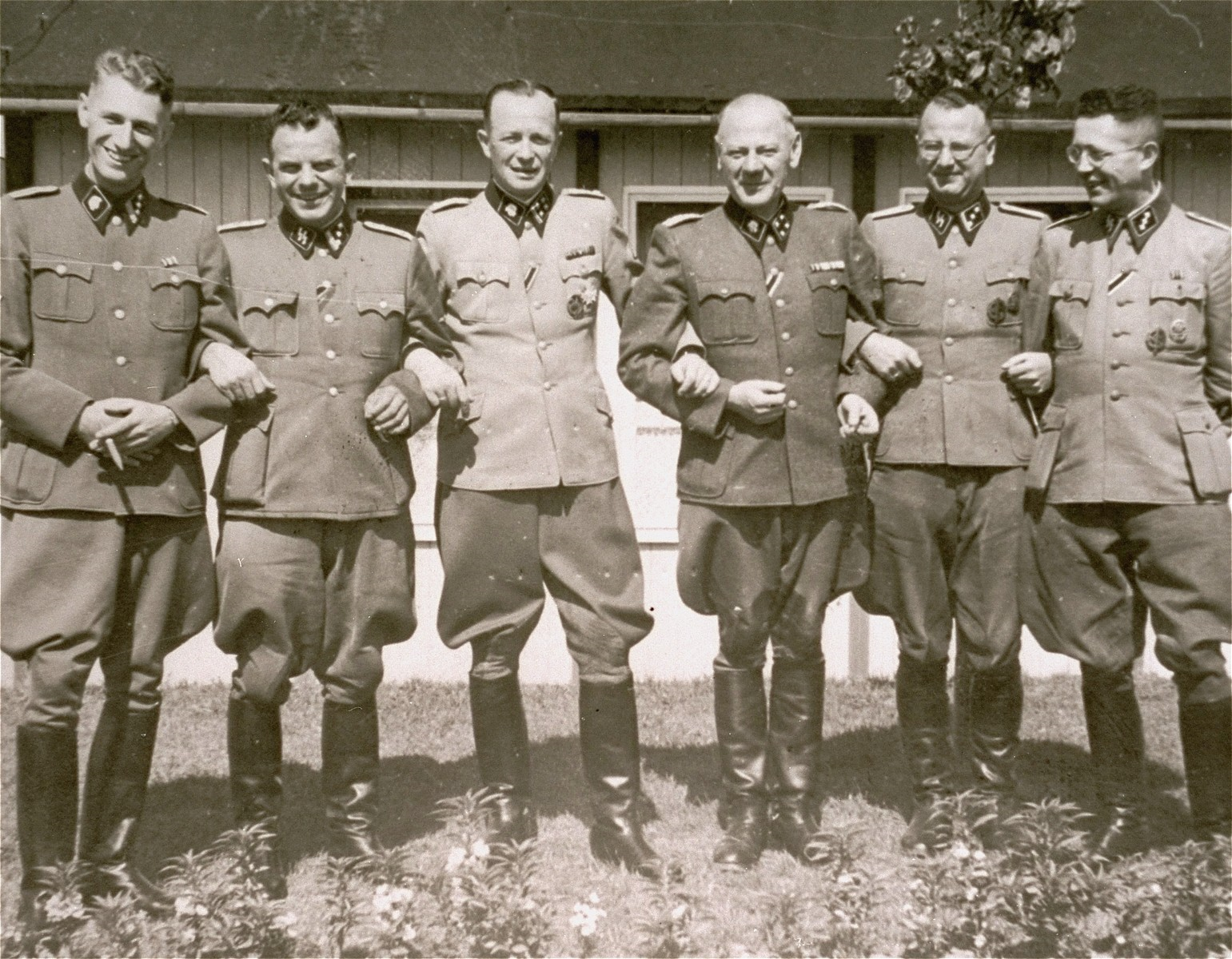Lukas Meissel lectures about photographic practices in Nazi concentration camps

“SS-Photographs from Concentration Camps. Perpetrator Sources and Counter-Narratives”
Lukas Meissel (Ph.D. Candidate in Holocaust Studies, University of Haifa)
2018-2019 Margee and Douglas Greenberg Research Fellow
February 12, 2019
Lukas Meissel, the 2018-2019 Margee and Douglas Greenberg Research Fellow, gave a public lecture on the research he conducted during his month-long residency at the USC Shoah Foundation Center for Advanced Genocide Research. Meissel’s research, which is part of a larger dissertation project, focuses on photographic practices in Nazi concentration camps, with a special emphasis on photographs taken by SS personnel. During his lecture, Meissel presented on the history of SS photographs in concentration camps, his methodology and findings in the Visual History Archive, and some preliminary conclusions.
Meissel opened his lecture by pointing out that there are many photographs, such as that of the “Arbeit Macht Frei” sign from Auschwitz, which have become symbolic of the Holocaust. However, he noted that none of those well-known photographs associated with the Holocaust were taken at the time when concentration camps were still active; rather, these photographs were taken either after the liberation or years after the Second World War. Meissel emphasized that his research departs from these commonly-known photographs to focus on those that were taken by SS personnel who worked in Nazi concentration camps during the period between 1933 to 1945, with a special emphasis on so-called “institutionalized perpetrator photography.”
In the first part of his lecture, Meissel focused on the history of SS photographs in concentration camps. He explained that the first photographs of Nazi camps were taken in 1933 by photojournalists who visited those camps. The emphasis in these photographs was the political confinement of the opposition. However, starting with 1936, the SS personnel started taking photographs inside the concentration camps. In particular, in camp “identification departments” (Erkennungsdienst), SS associates (including forced laborers) were allowed to take photos. Identification departments were responsible for creating camp inmates’ files, which contained standardized mug shots. The work of these departments, according to Meissel, represents a continuation of police institutions inside concentration camps and points to the self-perception of the SS. He argued that these photos must be understood within the tradition of creating evidence of the supposed legality of concentration camps.
In addition to mug shots, identification departments’ personnel were also responsible for taking other photos in the camps, which did not resemble the reality of these camps. For example, Meissel showed photographs of the women’s concentration camp at Ravensbrück that depict the camp as a working facility, which – as survivor testimonies reveal (including Helen Klein’s testimony in the VHA) – is far from accurate. Meissel also touched on the fact that individual SS men would occasionally keep photos for themselves that featured SS personnel posing for the camera. These photos were also produced and developed by identification departments. Such photos are revealing about the self-image of the perpetrators and the way they wanted to be perceived.
In the second part of his lecture, Meissel turned to his methodology of studying these photographs. He stated his interest in the so-called “perpetrator’s gaze,” or the intended meaning of these images and the perpetrators’ reasoning behind them. In particular, he asked the following questions: What do these photos tell us about the perpetrator’s perspective on their crimes? What photographic, mental, and ideological images did perpetrators want to create and for whom? To answer these questions, Meissel pointed to his analysis of SS photographic genres (identification photography, industrial photography, crime scene photography, police photography, etc.), particularly as they relate to other contexts. He noted that these genres actually reflect the intended uses of the SS photographs from concentration camps, arguing that they are not only visualizations of the camps, but also part of the crimes committed there.
To illustrate his point, Meissel elaborated on a staged photograph from Mauthausen concentration camp that supposedly represents a case of “unnatural death” (murder), pointing out that these photographs did not contribute to the investigation of crimes, but to their cover-up. In addition, Meissel argued that these photos prove Nazi intention to present their camps as part of a modern legal system. Such intention is the reason why violence was rarely documented in these photos. Violence becomes visible, as Meissel noted, from survivors’ narratives. He concluded that, considering that these photos were a concrete tool used by the perpetrators to conceal the violent reality of the camps, it is crucial to examine survivors’ narratives. Survivor testimonies provide counternarratives to what is depicted in the SS photographs and not only help to break the visual narrative of the perpetrators, but also contribute to include significant aspects of the camps’ reality not depicted in the photographs.
Meissel concluded his lecture by arguing that SS photos demonstrate the danger of uncritical usage of perpetrator documents, and stated his hope for contributing to the larger subfield of Holocaust studies that focuses on the perpetrators.
Meissel’s lecture was followed by a long and thought-provoking Q&A session, which included the questions about the intended audiences for these photos; challenges and limits of survivor testimonies as counter-images; the distinction between the SS and prisoner photography; the responsibility of those running the camps to report on camps’ operations; the use of prisoner photos as a form of resistance; considerations of other visual sources, such as survivors’ visual art; the role of gender in perpetrators’ lenses; documentation relating to professional formations of photographers; Meissel’s research methods; photos from extermination camps, and the role of prisoners in producing these photos.
Summary by Badema Pitic
________________________________________
Lukas Meissel’s lecture “SS Photographs from Concentration Camps: Perpetrator Sources and Counter-Narratives of Victims”
In this lecture, Lukas Meissel (PhD candidate, Haifa University, and 2018-2019 Greenberg Research Fellow) presents the preliminary findings of his dissertation research about photographic practices in concentration camps, specifically photos taken by SS men, to argue that the SS photographs were used to create a specific visual narrative of the concentration camps that excludes significant aspects of the camps’ reality.